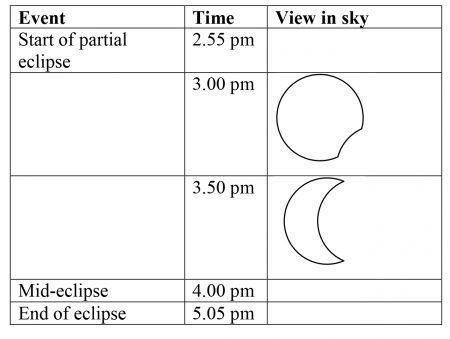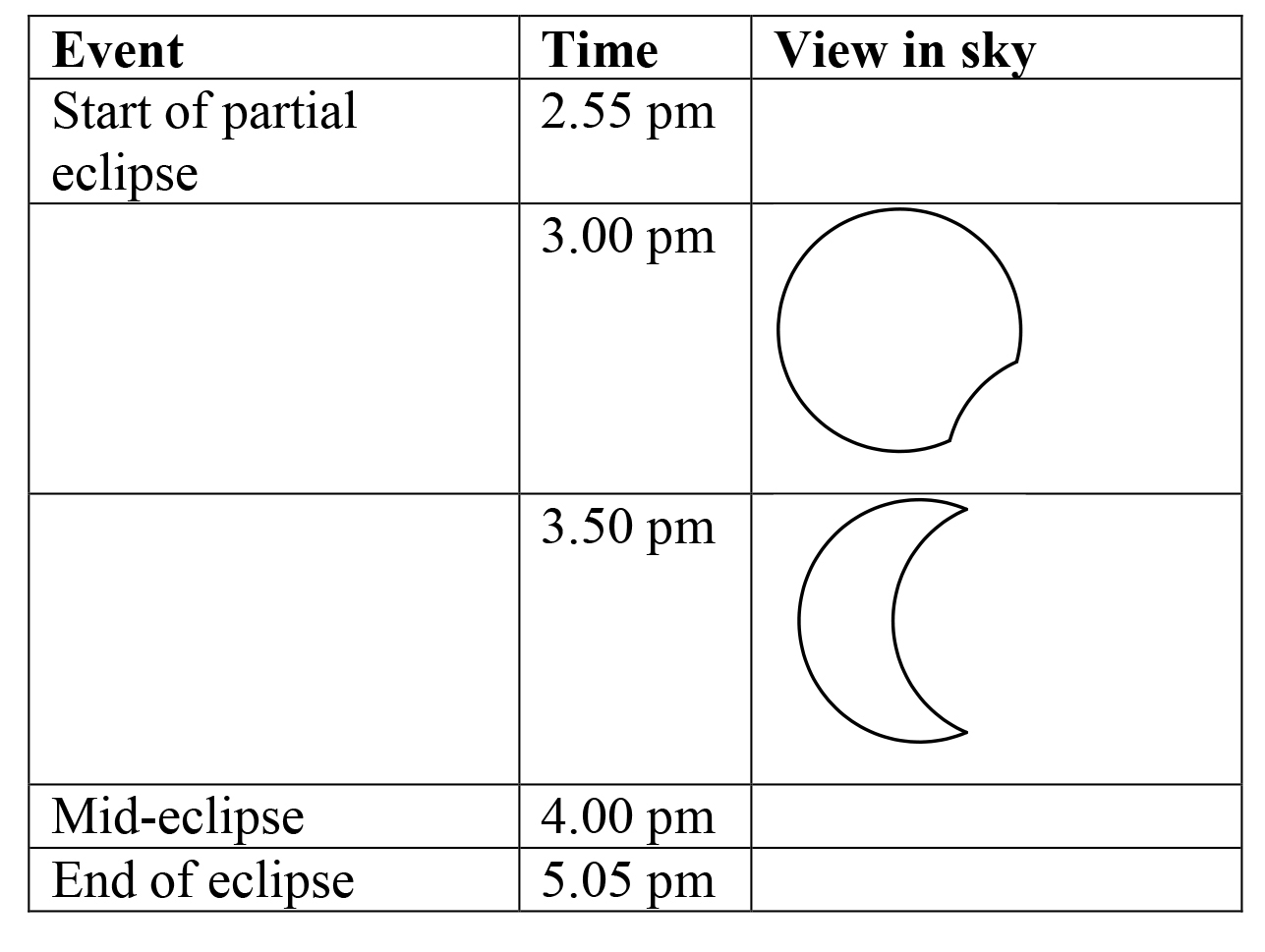Dear Editor,
There will be a partial eclipse of the Sun mid-afternoon of Monday August 21, 2017, because some of the Moon’s shadow will fall on us as the Moon gets into our line of sight with the Sun. Notable events are listed in the following table:
 A total eclipse will be experienced in the USA and there should be a plethora of information available online. In Guyana we will experience at most about 64% of the Sun being blotted out at mid-eclipse. The next such partial eclipse is expected October 14, 2023.
A total eclipse will be experienced in the USA and there should be a plethora of information available online. In Guyana we will experience at most about 64% of the Sun being blotted out at mid-eclipse. The next such partial eclipse is expected October 14, 2023.
Do not look directly at the Sun. Use safe filters, or, best of all, view an image of the Sun projected onto a suitable background through a pinhole in a sheet of cardboard.
Those intending to write Physics at CXC can use the opportunity to perform an experiment with shadows. Bore small holes of different sizes in a sheet of cardboard to allow the sunlight to pass though the holes onto the ground. That is all the apparatus that will be required. Observe which holes give sharper and which give brighter images of the Sun. Carry the cardboard anywhere in the sunlight and observe the movement of the Moon’s shadow around the image of the Sun during the partial eclipse. Note that the image on the ground will be upside down. This means that at 3 pm the Moon will block the Sun from the lower right of the disc in the sky, but that blockage will appear at the upper right of the disc projected through the cardboard onto the ground.
Write a report with diagrams and observations explaining the sharpness, brightness and inversion of the images, and submit to your Physics teacher to be assessed for ORR (observation, recording and reporting) and AI (analysis and interpretation).
I am not including a diagram of the partial eclipse at 5 pm, because I want to see what my own students will show me.
Yours faithfully,
Alfred Bhulai
Editor’s note: An earlier version of this letter incorrectly stated in the headline that the eclipse would be tomorrow. It will occur on August 21st.






